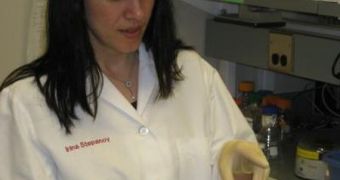According to a new scientific study, it would appear that the wide-held belief that snuffing or chewing tobacco is less harmful than smoking it is false. Researchers have recently discovered that several classes of chemical compounds, which are found in smokeless tobacco, are just as harmful as those found in cigarettes, and sometime even more. In addition to the dangerous group of polycyclic aromatic hydrocarbons (PAH), investigators also discovered two dozen other carcinogen substances, which increase the risk of oral and pancreatic cancers.
Details of the hidden dangers inside smokeless tobacco were presented on August 16th, in Washington DC, at the 238th National Meeting of the American Chemical Society (ACS). “This study once again clearly shows us that smokeless tobacco is not safe. Our finding places snuff on the same list of major sources of exposure to polycyclic aromatic hydrocarbons as smoking cigarettes,” the leader of the research team, Irina Stepanov, PhD, said. She also added that PAH were usual environmental contaminants, which appeared for instance when burgers and stakes were being fried.
The study gains new importance when analyzing the market trends for smokeless tobacco. Statistical estimates show that, since the 1980s, moist snuff tobacco sales have increased two fold, and that the trend is continuing to develop. Most of it is driven, researchers say, by an incomplete understanding of the effects of this type of tobacco on health on the part of the users, which regard it as safer than the usual variety. The same type of behavior is being observed with cigarettes that bear the inscription “lights” or “ultra-lights” as well.
“The feeling of safety among some smokeless users is wrong. A total of 28 carcinogens were identified in smokeless tobacco even before our study. Continued exposure to these over a period of time can lead to cancer. Now we have found even more carcinogens in snuff,” Stepanov, who holds an appointment as a chemist in the University of Minnesota Masonic Cancer Center, shared. “Even though smokeless tobacco use does not involve burning, moist snuff is getting contaminated with PAH during its manufacturing.”
Funding for Stepanov's research came from the National Cancer Institute and the National Institute on Drug Abuse to the Transdisciplinary Tobacco Use Research Center, at the University of Minnesota. The American Chemical Society (ACS) is a nonprofit organization chartered by the US Congress. With more than 154,000 members, ACS is the world's largest scientific society and a global leader in providing access to chemistry-related research through its multiple databases, peer-reviewed journals and scientific conferences.

 14 DAY TRIAL //
14 DAY TRIAL //